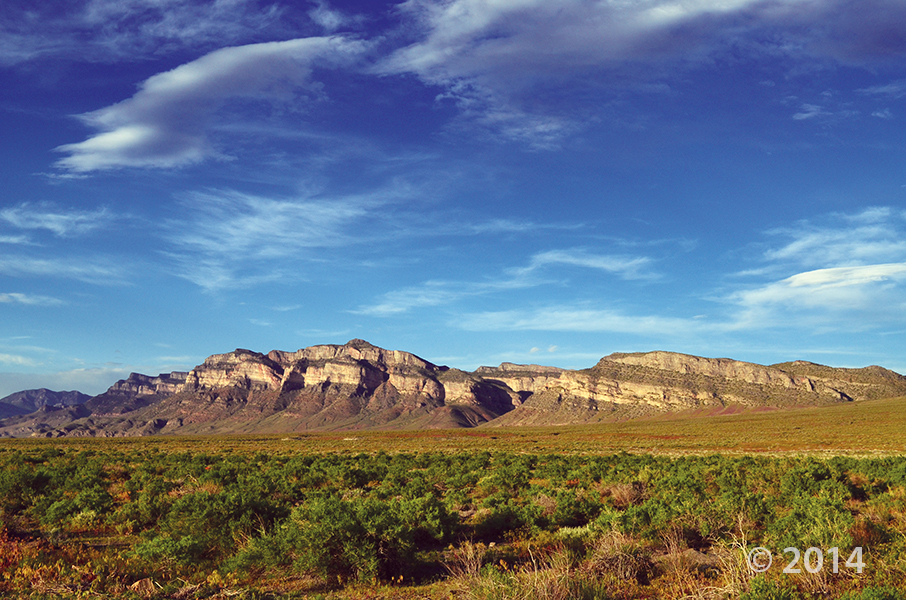February 19, 2015
Groundwater Levels in Western Juab and Millard Counties are Declining; Additional Pumping Will Accelerate Depletion and Hurt Sensitive-species Habitat and Vegetation
Salt Lake City – A seven year hydrogeologic study to monitor groundwater in Utah’s Snake Valley was recently released by the Utah Geological Survey (UGS), a division of Utah’s Department of Natural Resources. The study shows potential groundwater development in Nevada and Utah would lower groundwater levels and reduce spring flow in west-central Utah used to support agriculture, habitat of sensitive-species and vegetation for grazing.
“The time and resources committed to this study delineates groundwater levels, flow and chemistry in Snake Valley and adjacent basins to a much greater degree than was previously possible,” said Hugh Hurlow, senior scientist for the UGS Groundwater and Paleontology Program. “With pressure to develop groundwater in west-central Utah and east-central Nevada likely to continue, we needed to understand how future development and groundwater use was going to impact Utah residents and natural resources.”
The report, Hydrogeologic Studies and Groundwater Monitoring in Snake Valley and Adjacent Hydropgraphic Areas, West-central Utah and East-central Nevada, closely tested and monitored groundwater in Snake Valley, Tule Valley and Fish Springs in Millard and Juab counties.
Monitoring by UGS revealed that current groundwater use in Snake Valley is slowly depleting the basin-fill aquifer. Present pumping rates will continue to lower groundwater levels and reduce spring flow.
The study also shows future water development and increased pumping in Nevada or Utah would significantly increase the rate and area of groundwater level decline. Additional pumping for local agriculture use, or export from the area would harm springs and shallow groundwater that supports habitat of sensitive-species and vegetation used for grazing.
Additionally, researchers found that shallow basin-fill and deep carbonate-rock aquifers are interconnected. Increased pumping could also cause drawdown from both, which in turn could impact valleys beyond Snake Valley.
“Groundwater pumping would affect environmental conditions and current and future groundwater use in Snake Valley,” Hurlow said. “Taken together, the proposals for groundwater development in the region exceed the groundwater available for development. The current ecosystem would be negatively impacted by all but small levels of additional pumping.”
The UGS study was funded by the Utah Legislature in 2007, primarily to evaluate the impacts of a proposed project by the Southern Nevada Water Authority (SNWA) to pump groundwater from several basins in east-central Nevada for use in Las Vegas. SNWA’s project includes wells in Snake Valley, within five miles of Utah.
SNWA’s original plan requested over 50,000 acre-feet of water per year (AFY) in Snake Valley and over 90,000 AFY in Spring Valley, immediately west of Snake Valley in Nevada. The Nevada State Engineer approved about two-thirds of SNWA’s request for Spring Valley, and has not considered the application for Snake Valley. Legal challenges to the Nevada State Engineer’s award have delayed the project indefinitely.
To complete the hydrogeologic study and groundwater monitoring, UGS developed a monitoring network that includes wells at agricultural areas, springs and remote sites. In all, 76 wells record water levels hourly, and new spring-flow gages are in place at six sites. Data from the study is available on the UGS Groundwater Monitoring Data Portal. Data collection is planned to continue for the foreseeable future.
The report is available for purchase from the Utah Department of Natural Resources Map and Bookstore, 1-888-UTAHMAP, GET IT HERE. A PDF version of the report is also available on the UGS webpage.
Media Contact
Nathan Schwebach
Public Information Officer, DNR
801-440-9094
nathanschwebach@utah.gov









